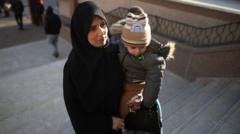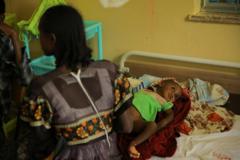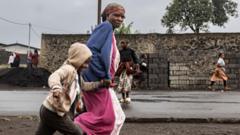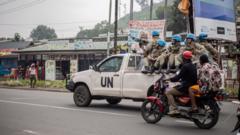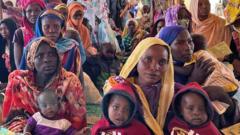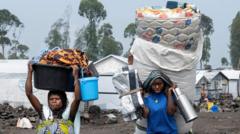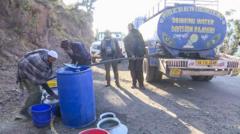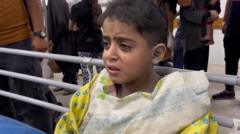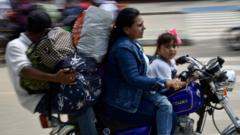The humanitarian situation in Haiti continues to deteriorate due to rampant gang violence and acute malnutrition affecting thousands of children.
On the Brink: Inside Haiti's Dire Gang Crisis
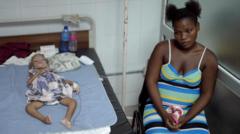
On the Brink: Inside Haiti's Dire Gang Crisis
A Kenyan-led mission confronts escalating violence in Port-au-Prince as families suffer.
Two-year-old Shaina lies in a hospital in Port-au-Prince, connected to an intravenous drip as her mother, Venda, clings to hope amid the chaos of Haiti's ongoing gang warfare. With approximately 760,000 children on the verge of famine, Shaina's condition is emblematic of the broader crisis affecting the nation.
For weeks, Venda did not dare to leave her home due to the gang violence engulfing her neighborhood. Now, as her daughter receives treatment at one of the few operational hospitals, she expresses her desperation. “I want to get proper care for my child, I don’t want to lose her,” she weeps.
Ever since the assassination of former president Jovenel Moïse in 2021, gang violence has spiraled out of control, leading to an alarming statistic: an estimated 85% of Port-au-Prince is under gang rule. The United Nations has reported that this year alone, around 5,000 people have been killed, pushing Haiti closer to collapse.
Even those seeking medical care are not exempt from violence. Police battles with gang members have led to terrifying scenes in emergency wards, where wounded civilians occupy beds alongside gang victims. Among them is Pierre, a young man who suffered a gunshot wound during a street fight after leaving work. He blames the unstable government for failing to engage youth in constructive programs.
To counter escalating violence, the UN Security Council established a Multinational Security Support Mission (MSS) in October 2023, spearheaded by a Kenyan force deployed six months prior. On patrol in Port-au-Prince, the grim landscape unfolds: deserted streets, boarded-up shops, and barricades erected by gangs to block access.
As the Kenyan armored personnel carriers navigate this dystopian setting, they come under fire. Soldiers return fire, reminding us of the high stakes in this multi-faceted conflict. After skirmishes, they continue on, discovering charred remains of violence amidst the rubble.
Kenyan police officers speak of their exhaustion as they find themselves significantly outnumbered; local estimates indicate around 12,000 armed gang members roam the streets. Although additional troops are anticipated, the promise of reinforcements has yet to be fulfilled. Commander Godfrey Otunge states that local support for their mission remains robust, yet the gap in resources hinders progress.
The mission has had some successes, reclaiming areas previously occupied by gangs, yet threats abound. In one instance, armed gangs retaliate with sniper fire, underscoring the dangers in even the most secured locations.
According to reports, around 100 different gangs operate in Port-au-Prince, some of which recruit children as young as nine. One notorious gang, led by Ti Lapli, has become a focal point of terror, involving itself in kidnappings and other heinous acts. Ti Lapli justifies the gang’s violent approach as a response to government neglect and lack of economic opportunities.
As neighborhoods fall and the cycle of violence perpetuates, people like Negociant endure unimaginable suffering, forced to flee their homes for safety. Now residing in a school converted into a makeshift refuge, she recounts her harrowing journey, fearful for her children's futures.
With the humanitarian crisis deepening and more civilians displaced, Haiti grapples with the complexities of poverty, violence, and loss, as families like Venda's and Negociant's cling to hope amidst despair.

